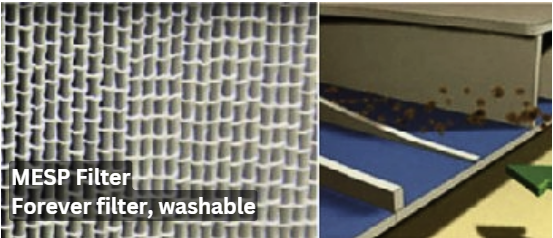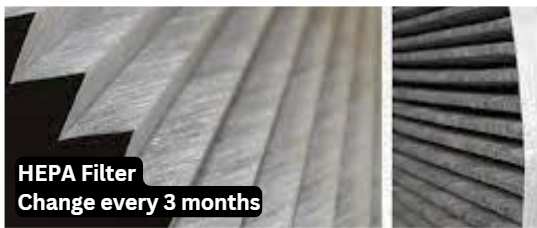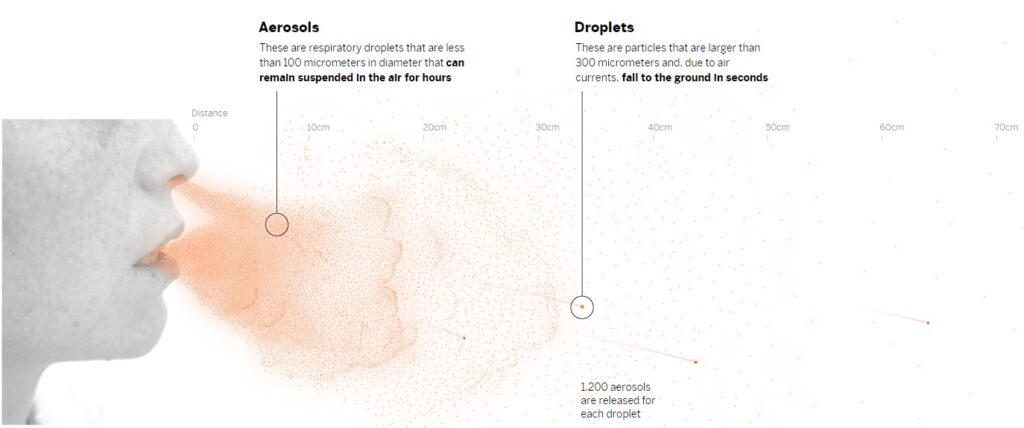BLOG
SARS-CoV-2 Virus Spreads via Airborne Particles and Droplets
People infected with COVID can release particles and droplets of respiratory fluids that contain the SARS-CoV-2 virus into the air when they exhale (e.g., quiet breathing, speaking, singing, exercise, coughing, sneezing). These droplets carry the virus and transmit infection. Indoors, the very fine droplets and particles will continue to spread through the air in the room or space and can accumulate.
Inhalation of the virus in the air can occur at distances greater than six feet. Particles from an infected person can move throughout an entire room or indoor space. The particles can also linger in the air after a person has left the room – they can remain airborne for hours.
Some circumstances increase the risk of infection:
- Being indoors rather than outdoors, particularly in indoor environments where ventilation with outside air is inadequate
- Activities that increase emission of respiratory fluids, such as speaking loudly, singing, or exercising
- Prolonged time of exposure (e.g. longer than a few minutes)
- Crowded spaces, mainly if face coverings are inconsistently or improperly worn
EPA recommends increasing ventilation with outdoor air and air filtration as important components of a larger strategy that may include physical distancing, wearing cloth face coverings or masks, surface cleaning , handwashing, and other precautions.
Published 19/8/2021 by
USA, EPA
Environmental Protection Agency
Effectiveness of MESP filter after 100 cycles of washing

The graph shows the Clean Air Delivery Rate (CADR) value for a MESP filter after 100 cycles of washing.
A brand new MESP filter was used and its CADR of particulate matter was tested as the initial value.
The CADR value shows no obvious change. CADR fluctuation range:-5.2%~+2.7%.
Conclusion: The CADR has no attenuation even after 100 cycles of washing.
Can Indoor Air Quality in Schools Affect Students’ Alertness and Cognition?
Throughout history, schools have been considered second homes for a variety of reasons. This is why it should be a safe, encouraging, and healthy learning environment for their students. But of all the measures and practices implemented to secure their welfare, there is something that most educational institutions often miss: indoor air quality.
Common indoor air contaminants in school buildings
| Pollutants | Potential Sources |
| Volatile organic compounds (VOCs) | Emitted by building and furniture materials, cleaning products, pesticides and tobacco smoke. |
| Viruses and molds | Due to poorly maintained HVAC systems |
| Carbon Monoxide | Generated by indoor and outdoor combustion |
| Formaldehyde | Paint and adhesives |
| Carbon dioxide | School and animal waste, human activities, excessive energy consumption |
| Particulate Matter | Emissions from vehicles, printing and photocopying equipment, infrequent vacuuming and dusting, etc |
The air pollutants listed above are often overlooked and neglected, but they must not be. Depending on the type of pollutant, its effects can be visible immediately or even years later.
Problems associated with poor indoor air quality
Poor indoor air quality affects us all, but it may pose a greater risk in children than adults since their lungs and other organs are still developing. This makes them more vulnerable to damage, which can have both immediate effects, such as causing asthma – and long-term effects – such as reducing their lung volume for life.
Second, children breathe faster than adults. A typical adult takes between 12 and 18 breaths a minute. A 3-year-old child takes 20 to 30 breaths a minute, and a newborn takes 30 to 40. So young children are breathing in the polluted air 2-3 times as much as adults are, according to UNICEF.
Students exposed to stale indoor air at school can suffer from a range of short-term to long-term physical and mental health issues.
- Severe asthma symptoms
- Did you know that according to the American Lung Association, children who are constantly exposed to high levels of indoor air pollution are at greater risk of experiencing more frequent and severe asthma flare-ups?
- A cough, sore throat or sore eyes are the common things that we notice. But the real damage is far more serious. The most dangerous air pollutants of all are the smallest particles. They reach deep down into the lungs. From the lungs, they pass into the bloodstream. In the bloodstream, they circulate around the body.
- Higher risk of having respiratory infections
- Air pollution can exacerbate respiratory infections in children, including bronchitis, colds and the coronavirus. Frequent exposure to poor indoor air quality can impair the immune system and make a child more susceptible to respiratory illnesses.
- Indoor air pollution weakens memory function
- Poor memory performance may be the result of exposure to indoor air pollution. A report from a leading health journal, Health Affairs shows that high amounts of Nitrogen Dioxide (NO2) decrease memory function by 7.37%.
- Furthermore, exposure to carbon dioxide (CO2), imbalanced temperature, and excessive levels of tiny particles can make it difficult for a student to focus and strategize, which can have disastrous effects on their personal growth and academic performance.
- Inadequate ventilation can lead to poor academic performance.
- Clean air allows the brain to function better, but this is unlikely without sufficient ventilation. Ventilation replaces stale indoor air in enclosed spaces with fresh air from outside. Proper air circulation ensures that bacteria, viruses, and pollutants are not confined within the facility.
- A study from Science News for Students claims, students in stuffier classrooms performed lower on standardized examinations than pupils in facilities with fresher air. When classrooms are not well-ventilated, carbon dioxide levels rise and students struggle to concentrate.
- In another study, researchers analyzed the indoor air quality in 100 classrooms. It was observed that the indoor air quality in the majority of these classrooms is substandard, and pupils who were able to breathe cleaner air at school scored better on their standardized tests.
Managing indoor air quality in schools
The COVID-19 pandemic has driven school administrators worldwide to implement stringent precautions to keep classrooms safe and healthy. Aside from mask and vaccine laws, the utilization of air quality monitors as one of the indoor air quality tools in schools is recognized as an innovative technique for mitigating the negative impacts of poor indoor air on children.
LoRaWAN Ambience Monitoring Sensor is the most advanced indoor air quality sensor that monitors up to 9 factors affecting air quality, including carbon dioxide, fine particulate matter, VOCs, formaldehyde, temperature, humidity and more.
Monitoring CO2 levels is a good indicator of ventilation. This allows school administrators to ensure that facilities have a supply of fresh air, thus reducing health risks such as asthma attacks and viral infections. Meanwhile, data insights can be viewed using a centralized dashboard which can be used by school staff when taking actions to ensure students’ safety, productivity and outstanding academic performance. To learn more about LoRaWAN Ambience Monitoring Sensors capabilities and technology that are suitable for every school’s IAQ monitoring requirements, read more.
MESP vs. HEPA


Even though HEPA filter was first designed and created in the 1940s, and as a result are more widely known, they pale in comparison with MESP. MESP can produce better than HEPA level of efficacy while producing far less pressure drop (air resistance). This is why MESP filters can provide high-efficiency filtration solutions in application areas where HEPA would be unsuited – such as HVAX systems.
Furthermore, MESP filters can be easily cleaned and reused repeatedly, which helps users to save the cost and time to replace HEPA filters. Various tests have been done to prove the effectiveness of the MESP filter after 100 cycles of washing – refer to the CADR test report above.

